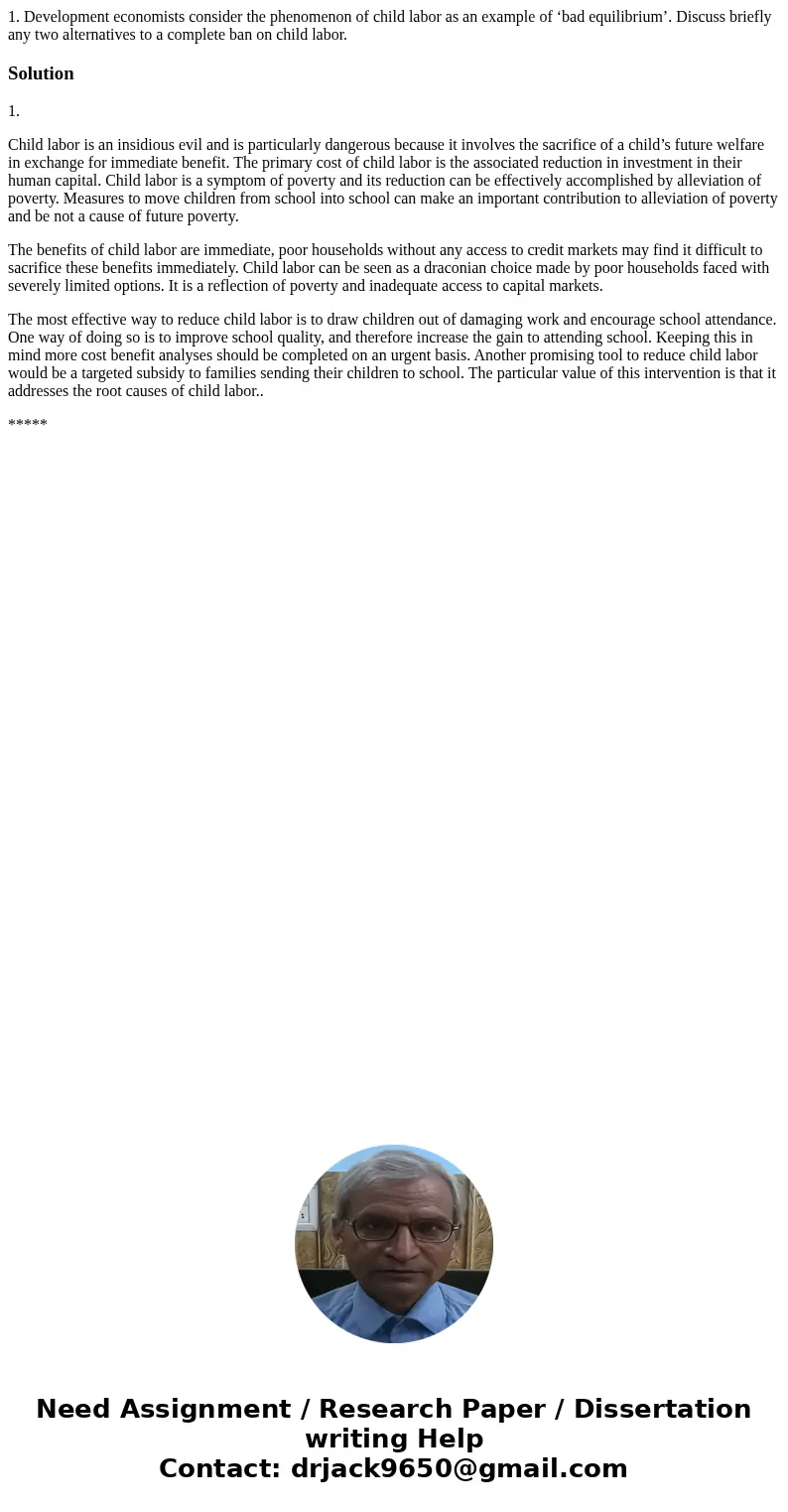1 Development economists consider the phenomenon of child la
1. Development economists consider the phenomenon of child labor as an example of ‘bad equilibrium’. Discuss briefly any two alternatives to a complete ban on child labor.
Solution
1.
Child labor is an insidious evil and is particularly dangerous because it involves the sacrifice of a child’s future welfare in exchange for immediate benefit. The primary cost of child labor is the associated reduction in investment in their human capital. Child labor is a symptom of poverty and its reduction can be effectively accomplished by alleviation of poverty. Measures to move children from school into school can make an important contribution to alleviation of poverty and be not a cause of future poverty.
The benefits of child labor are immediate, poor households without any access to credit markets may find it difficult to sacrifice these benefits immediately. Child labor can be seen as a draconian choice made by poor households faced with severely limited options. It is a reflection of poverty and inadequate access to capital markets.
The most effective way to reduce child labor is to draw children out of damaging work and encourage school attendance. One way of doing so is to improve school quality, and therefore increase the gain to attending school. Keeping this in mind more cost benefit analyses should be completed on an urgent basis. Another promising tool to reduce child labor would be a targeted subsidy to families sending their children to school. The particular value of this intervention is that it addresses the root causes of child labor..
*****

 Homework Sourse
Homework Sourse